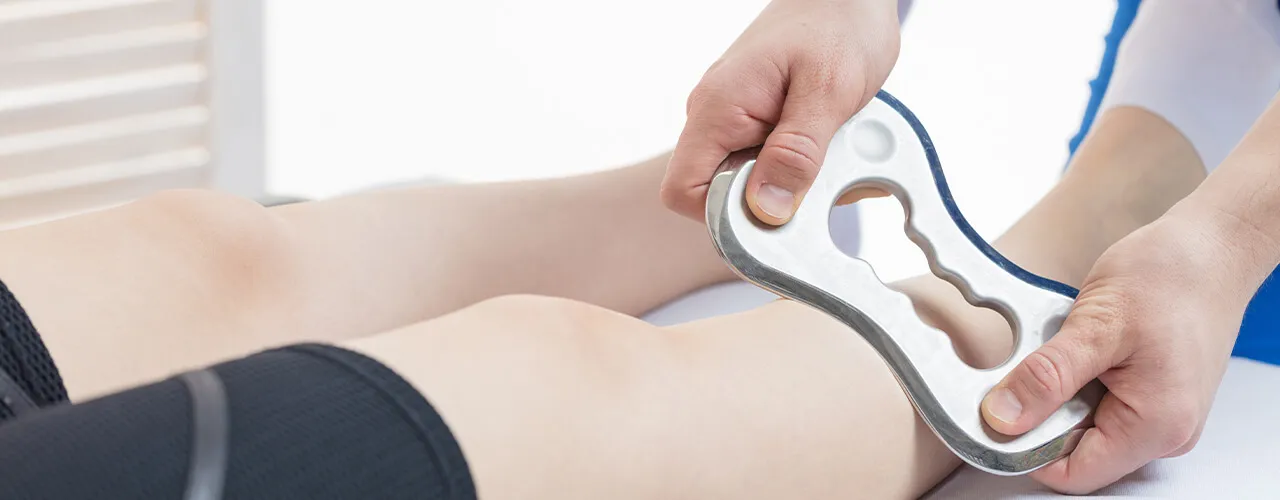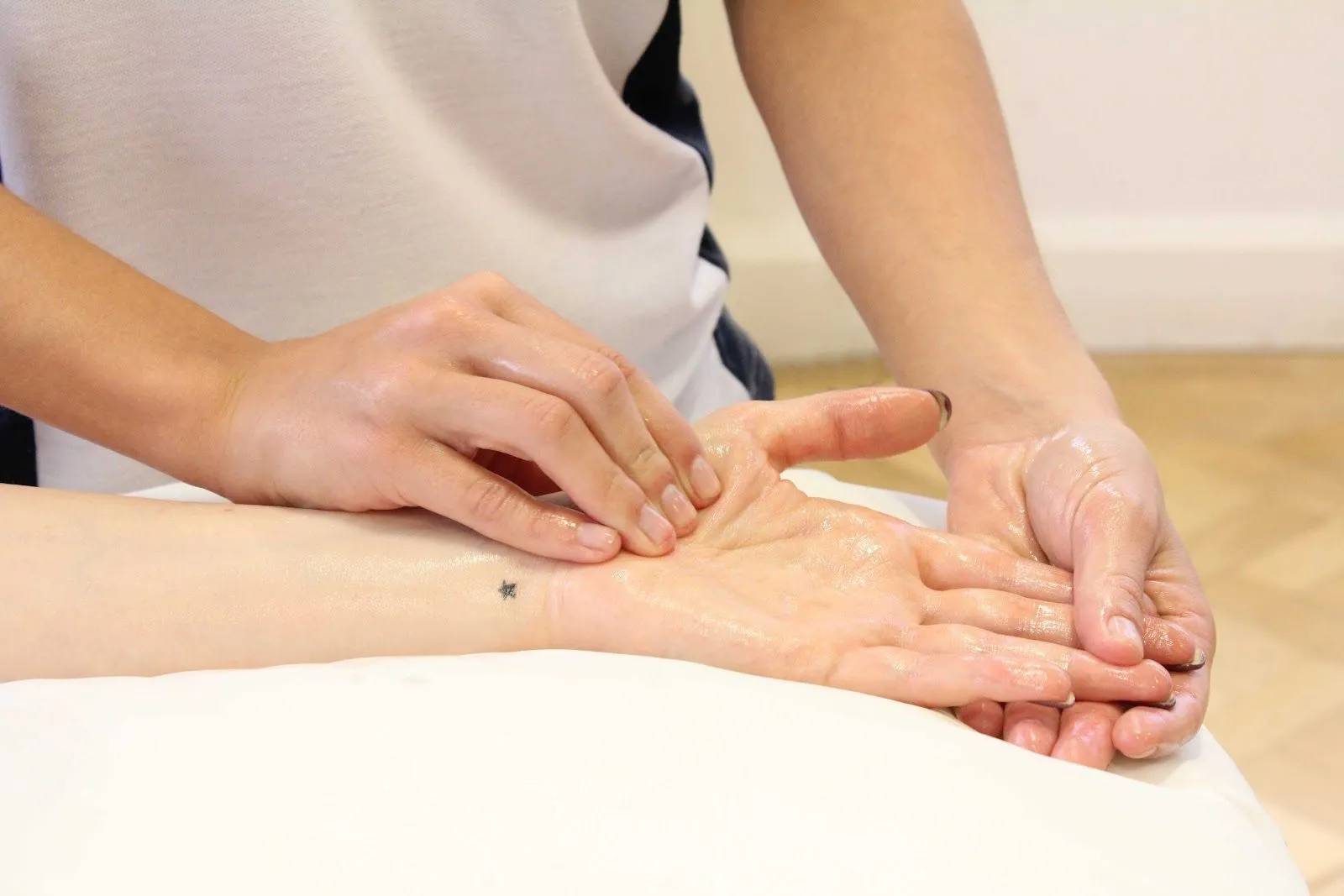
Soft tissue mobilization is a powerful and effective method that can greatly improve your overall health and well-being. By targeting the muscles, tendons, and ligaments, this technique can enhance muscle flexibility, prevent injuries, and boost your mobility. There are various techniques used for soft tissue mobilization, including instrument-assisted methods like IASTM, manual techniques, and the active release technique (ART). These techniques can be particularly beneficial for individuals suffering from chronic back pain, sports injuries, and frozen shoulder syndrome. When integrated into chiropractic care, soft tissue mobilization can complement spinal adjustments and enhance treatment outcomes through personalized care plans. It also plays a crucial role in rehabilitation by improving the range of motion, speeding up recovery, and addressing scar tissue formation. Safety considerations are paramount, with proper patient assessment and technique application being essential. By incorporating soft tissue mobilization into your wellness routine, you can experience preventive care benefits, long-term health management, and a holistic approach to wellness. With a wealth of research and evidence supporting its effectiveness, finding qualified healthcare providers who specialize in soft tissue mobilization can significantly impact your health and quality of life.

Soft tissue mobilization is crucial for improving muscle flexibility. By targeting the soft tissues, such as muscles and tendons, it helps to increase blood flow and decrease muscle tension. This results in an improved range of motion and overall flexibility, making it easier to perform everyday activities and exercise without experiencing tightness or discomfort.
In addition to enhancing flexibility, soft tissue mobilization also plays a significant role in injury prevention. By promoting better circulation and reducing adhesions within the muscles, it helps to minimize the risk of strains, sprains, and other soft tissue injuries. Regularly incorporating this practice into your wellness routine can contribute to maintaining healthy, resilient muscles that are less prone to injury.
Furthermore, soft tissue mobilization has a direct impact on overall mobility. When the soft tissues are properly mobilized, it allows for smoother movement patterns and increased joint mobility. This can be especially beneficial for individuals who struggle with stiffness or limited range of motion due to aging or previous injuries. By addressing these issues through targeted mobilization techniques, individuals can experience improvements in their daily mobility and quality of life.
Instrument-assisted soft tissue mobilization (IASTM) involves the use of specialized tools to apply targeted pressure to the soft tissues, helping to break down scar tissue and adhesions and improve blood flow. This technique can be effective in treating conditions such as tendinitis, muscle strains, and fascial restrictions.
manual soft tissue mobilization is performed through hands-on techniques by a trained therapist. This method includes kneading, stretching, and applying pressure to the affected areas to release tension and promote relaxation in the muscles and connective tissues. Manual soft tissue mobilization is commonly used in sports medicine and rehabilitation settings.
Active release technique (ART) focuses on locating specific points of tightness or restriction within the soft tissues and using precise movements to break up adhesions and restore mobility. ART is often used by chiropractors, physical therapists, and athletic trainers to address conditions like carpal tunnel syndrome, plantar fasciitis, or IT band syndrome.
Soft tissue mobilization is beneficial for a variety of conditions, including chronic back pain. The gentle manipulation and stretching of the soft tissues surrounding the spine can help to reduce tension and improve flexibility, leading to decreased discomfort and improved mobility.
Additionally, individuals suffering from sports injuries may find relief through soft tissue mobilization. By targeting specific areas of muscle tightness or adhesions, mobilization techniques can promote healing and decrease inflammation, allowing athletes to return to their sport with a reduced risk of re-injury.
Furthermore, frozen shoulder syndrome, characterized by stiffness and pain in the shoulder joint, may also benefit from soft tissue mobilization. Through targeted manipulation and movement exercises, this technique can help restore range of motion and reduce pain associated with this condition.

Soft tissue mobilization has been increasingly integrated into chiropractic care as an essential component of treatment. By complementing spinal adjustments with soft tissue mobilization, chiropractors can address muscle tension, scar tissue, and fascial restrictions that contribute to musculoskeletal pain. This integrated approach allows for a more comprehensive treatment plan that targets both the skeletal and muscular components of the body.
Furthermore, the integration of soft tissue mobilization has been shown to enhance treatment outcomes for patients. By incorporating techniques such as myofascial release and instrument-assisted soft tissue mobilization, chiropractors can improve the range of motion, reduce pain, and accelerate healing processes. The personalized nature of this approach also allows for tailored care plans based on individual needs and conditions.
In summary, the integration of soft tissue mobilization in chiropractic care represents a holistic approach to addressing musculoskeletal issues. By combining spinal adjustments with targeted soft tissue techniques, chiropractors can provide more effective and personalized treatments that result in improved patient health outcomes.

Soft tissue mobilization is a technique used in rehabilitation to improve range of motion, speed up recovery, and address scar tissue formation. By targeting the soft tissues such as muscles, tendons, and ligaments through manual techniques or tools like foam rollers or massage balls, soft tissue mobilization helps break down adhesions and restrictions that can limit movement and contribute to pain. This can be especially beneficial for individuals recovering from injuries or surgeries.
One of the key benefits of soft tissue mobilization is its ability to improve range of motion. By releasing tightness and improving flexibility in the soft tissues, individuals may experience an increase in their joint mobility and overall functional performance. This can be particularly helpful for athletes looking to enhance their physical capabilities or for anyone experiencing limitations in movement due to chronic conditions or a sedentary lifestyle.
Another important aspect of soft tissue mobilization is its role in speeding up recovery. By promoting circulation and reducing inflammation in the affected areas, this technique can help facilitate the healing process and alleviate pain associated with musculoskeletal issues. Additionally, addressing scar tissue formation through proper mobilization can prevent long-term complications such as decreased flexibility or ongoing discomfort.
When performing soft tissue mobilization, it is crucial to conduct a thorough patient assessment beforehand. This involves evaluating the patient's medical history, current symptoms, and any previous injuries or surgeries that may impact the treatment. By understanding the specific needs and limitations of the individual, healthcare professionals can tailor their approach to ensure both effectiveness and safety.
Proper techniques are essential for safe and successful soft tissue mobilization. Practitioners must undergo comprehensive training to master various manual therapy methods and understand how different techniques can affect tissues within the body. Additionally, maintaining proper body mechanics during treatment is critical to prevent strain or injury to the therapist while ensuring optimal outcomes for the patient.
It is vital to be aware of potential contraindications when considering soft tissue mobilization. Certain conditions or situations may make this treatment inappropriate or risky for a particular individual. For example, patients with severe osteoporosis, blood clotting disorders, or acute inflammation in the target area may not be suitable candidates for soft tissue mobilization due to the increased risk of complications.
Soft tissue mobilization is a valuable addition to any wellness routine, offering several preventive care benefits. By incorporating soft tissue mobilization techniques into your regular self-care practice, you can help prevent injuries and promote overall physical health. Regular sessions of soft tissue mobilization can improve blood circulation, increase flexibility, and reduce the risk of muscle strains or tears during physical activity.
In addition to its preventive care benefits, soft tissue mobilization also contributes to long-term health management. It aids in breaking down scar tissue and adhesions that may have developed from previous injuries or repetitive motions. This can help alleviate chronic pain and enhance range of motion in affected areas. Through consistent soft tissue mobilization sessions, individuals can work towards achieving long-term improvement in their musculoskeletal health.
When it comes to holistic wellness, incorporating soft tissue mobilization complements other aspects of self-care such as exercise and nutrition. Its ability to relieve muscle tension and improve mobility makes it an important component of a well-rounded approach to wellness. By integrating soft tissue mobilization into your routine, you are taking proactive steps towards promoting balance and overall well-being.
Clinical studies have consistently shown the positive impact of soft tissue mobilization on overall health. For example, a study published in the Journal of Orthopaedic & Sports Physical Therapy found that soft tissue mobilization significantly reduced pain and improved function in patients with musculoskeletal disorders. This evidence supports the effectiveness of this treatment approach in managing various conditions.
Patient testimonials also provide compelling support for soft tissue mobilization. Many individuals have reported decreased pain, increased range of motion, and improved quality of life after receiving this therapy. These personal accounts offer valuable insight into the real-life benefits of soft tissue mobilization and further validate its role in promoting health and well-being.
Furthermore, numerous healthcare professionals endorse the use of soft tissue mobilization as part of comprehensive treatment plans. Physiotherapists, chiropractors, and massage therapists often incorporate this technique into their practice to address issues such as chronic pain, sports injuries, and post-operative rehabilitation. Their endorsement reinforces the value of soft tissue mobilization as a therapeutic intervention.
When seeking a healthcare provider for soft tissue mobilization, it is important to choose a qualified chiropractor who has the necessary expertise in this area. Look for credentials such as advanced training or certification in soft tissue mobilization techniques. You may also want to consider the provider's experience and specializations, as well as their overall approach to patient care and treatment.
Seek recommendations from trusted sources such as friends, family members, or other healthcare professionals. They can provide valuable insight into finding a chiropractor who excels in soft tissue mobilization. Additionally, consider reading online reviews and testimonials to gain further understanding of a potential provider's skills and effectiveness when it comes to treating soft tissue injuries.
Ultimately, finding the right healthcare provider for soft tissue mobilization involves thorough research and careful consideration of their qualifications and reputation. By taking the time to find a qualified professional with expertise in this area, you can ensure that you receive effective care that leads to improved health outcomes.
At Prime Chiro, we understand the importance of finding the best chiropractor near you in Lansvale NSW and nearby areas of Fairfield, Liverpool, and Cabramatta. Our team of experienced professionals is dedicated to providing top-quality chiropractic care and consultation to help you achieve optimal health and wellness. Whether you are seeking relief from back pain, neck pain, headaches, or other musculoskeletal issues, Prime Chiro is here to help. Contact us today to schedule a consultation and take the first step towards a healthier, pain-free life.
Soft tissue mobilization is a manual therapy technique that involves applying pressure to the soft tissues of the body, such as muscles, tendons, and ligaments, to improve their mobility and function.
Soft tissue mobilization can improve health by reducing pain and inflammation, increasing blood flow and circulation, promoting tissue healing, and enhancing overall mobility and range of motion.
Soft tissue mobilization can benefit individuals who are experiencing musculoskeletal pain, stiffness, or limited range of motion due to various conditions such as sports injuries, chronic pain, postural imbalances, or repetitive strain injuries.
Soft tissue mobilization may cause some discomfort or mild pain during the treatment, but it should not be excessively painful. The therapist will adjust the pressure and intensity based on your comfort level.
The duration to see results from soft tissue mobilization can vary depending on the individual and the specific condition being treated. Some people may experience immediate relief, while others may require multiple sessions to achieve significant improvements.
TL;DR: Soft tissue mobilization is an important technique that can improve muscle flexibility, prevent injuries, and enhance overall mobility. Different techniques like IASTM and ART can be used to address conditions such as chronic back pain, sports injuries, and frozen shoulder syndrome. When integrated with chiropractic care, it can complement spinal adjustments and aid in rehabilitation. Safety considerations, research evidence, and finding qualified healthcare providers are important factors to consider when incorporating soft tissue mobilization into wellness routines.